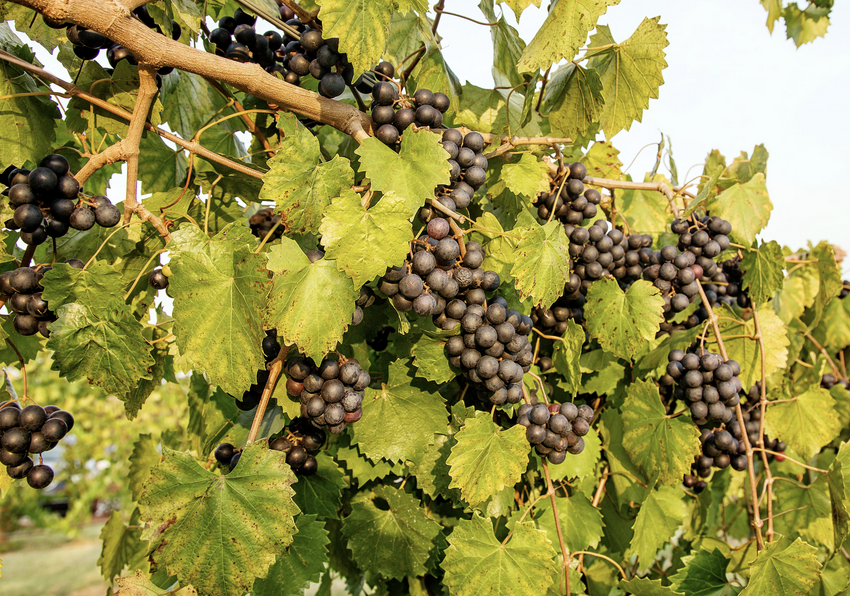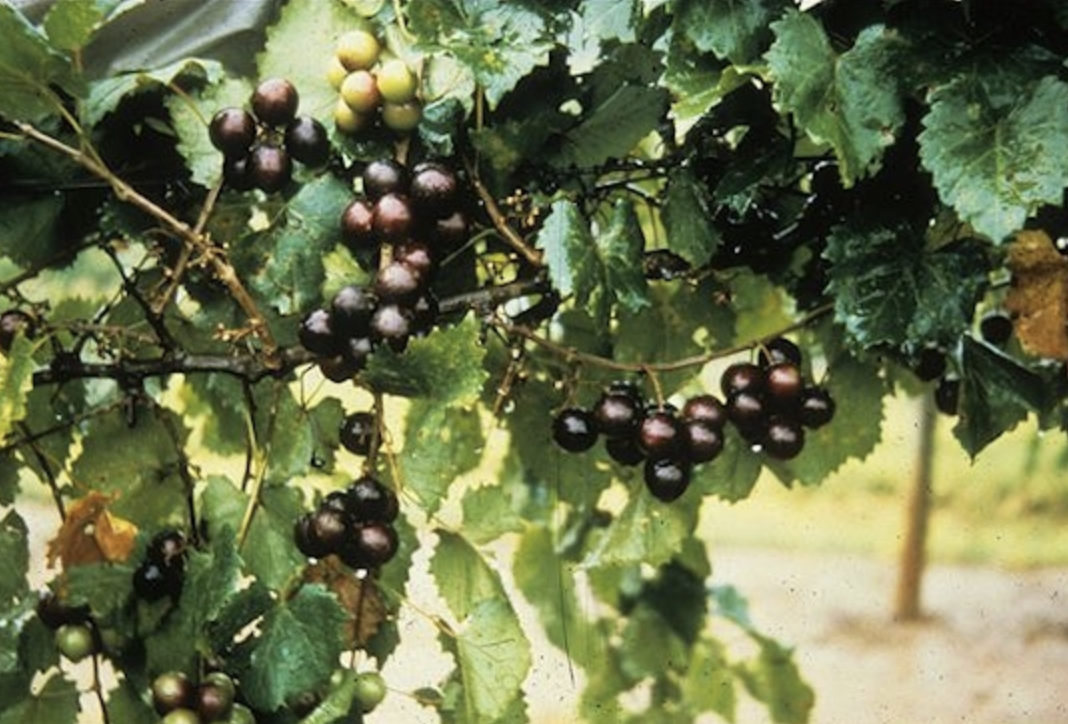|
By Matt. S. You can’t travel far in northeastern North Carolina without passing a home with muscadine grapes growing in the backyard. Many of those vines we see have been growing for decades and the care of them has been passed down from one family member to the next. Or, perhaps, been forgotten.
other assorted varieties of muscadines are harvested throughout North Carolina from August through early October.
grapes (again, Scuppernong is a variety of muscadine, not an entirely separate type, as some mistakenly believe). Both bronze and black muscadines make wonderful jams, jellies, pies, juices, and wines. Grapes produce fruit on new growth and therefore need to be pruned yearly to maintain regular fruit production. Grapes that have been unpruned for many years will gradually become less productive, as these vines will have less and less new growth each year. The exact style of pruning depends on how the grapes have been trained. The most efficient training method for fruit production is to grow the grapes on a trellis resembling a clothesline and shape the vine such that its trunk and two main branches for the shape of the letter T. Many side shoots will sprout from each of the two main branches, with some stretching to as long twelve feet in a given year. Each of those side shoots can be pruned back to about 3-4 inches. Late January through February is generally the best time to prune. The vine will appear nearly bare following pruning, but will quickly replenish when new growth starts in spring. You may see some sap drip or bleed from the freshly cut vines. A small amount of bleeding is normal and shouldn’t be much cause for worry, but the warmer the temperatures, the more bleeding you’ll see from each pruning cut. This is why pruning is best done in the dormant winter season before spring begins.
While regular pruning is needed to encourage the new growth that ultimately produces fruit, keep in mind that if vines have gone many years between trimmings, heavy pruning will sometimes cause a temporary setback in fruit production. If you can’t remember the last time your vines have been pruned, but they still produce a small amount of fruit each year, you may consider dividing the structure the vines are growing on into thirds and pruning one section each year, so that the vines can be rejuvenated without completely missing out on fruit for a year or two.
Matthew Stevens is the County Extension Director and Horticulture Agent for North Carolina Cooperative Extension’s Pitt County Center. If you have questions about this article or gardening in general, please contact the Pitt County Extension Master Gardener Infoline at 252-902-1705.
0 Comments
Leave a Reply. |
Matt Stevens
Pitt County Extension Director & Horticulture Agent Archives
July 2024
Categories |



 RSS Feed
RSS Feed